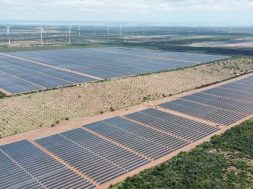
India needs to drastically improve its energy storage infrastructure in order to successfully integrate renewable energy sources and fulfil the nation’s soaring energy demands. The Central Electricity Authority (CEA) forecasted a requirement of 74 gigawatts (GW) and 411 gigawatt-hours (GWh) of energy storage capacity by 2032 in accordance with the National Electricity Plan (NEP) 2023.
The need for energy storage capacity is expected to increase over the next few years, according to NEP 2023. India plans to have 16.13 GW of energy storage capacity by 2026–2027, made up of 8.68 GW of battery energy storage systems (BESS) and 7.45 GW of pumped storage plants (PSP), with a total storage capacity of 82.32 GWh. By 2029–2030, this capacity will rise to 60.63 GW (18.98 GW PSP and 41.65 GW BESS), with a storage capacity of 336.4 GWh.
The predicted requirement for energy storage by 2031-32 is 73.93 GW (26.69 GW PSP and 47.24 GW BESS), with a staggering storage capacity of 411.4 GWh. An estimated funding requirement of Rs 54,203 crore for PSP and Rs 56,647 crore for BESS is predicted to create this storage capacity from 2022 to 2032. By 2047, CEA predicts that India’s energy storage requirements could soar to a staggering 320 GW (90 GW PSP and 230 GW BESS) with a combined storage capacity of 2,380 GWh. This projection is in line with India’s goal of achieving net zero emissions by 2070 and the rapid expansion of renewable energy sources.
Comprehensive recommendations have been prepared by the Ministry of Power to encourage the use of energy storage. The standards’ goals include ensuring dispatchable renewable energy is available 24 hours a day, cutting greenhouse gas emissions, and increasing energy efficiency. The recommendations also support energy storage as an engine of economic growth, establish market mechanisms for ancillary services, and encourage energy storage participation in the electrical market.














